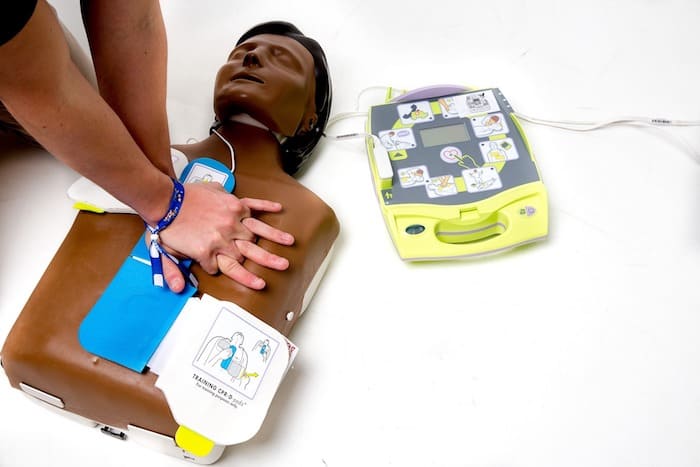Like most people, you probably know what a defibrillator is, solely because of all the movies you’ve seen it in. But, let’s see if this description actually gets your mind to picture it. The doctor says, “Clear” and two metal pedals are placed on the bare chest of a person whose heartbeat has flatlined.
The almost lifeless corpse jerks when the pedals execute electric current to his or her heart. The doctor administers the first shock. Lifts the pedals and if the heartbeat is not sustained, he places those pedals back on the chest to execute another shock. Can you picture it now? The heartbeat is back and the doctor sighs in relief. That is the power of a defibrillator.
For what is the defibrillator used?
The function of a defibrillator is to get a heart that has stopped beating to work again. Simply put, it’s a miracle tool that shocks the heart so that it can function and jumpstart the blood circulation process in the body.
This is all thanks to the defibrillator’s shock action which uses electric currents to pump blood from the heart towards the arteries. This is the natural electric pumping action of the heart, and most of the time it happens without you even knowing it.
Any trauma to the heart or upset in bodily functions causes a strain in the normal pumping action. When the normal functioning of the heart ceases to exist, a defibrillator must be administered.
This means that if electric current is pumping blood too quickly out of the heart towards the arteries, or if the blood is pumped too slowly towards the arteries then a defibrillator is required.

When is the defibrillator used?
When the heart faces trauma, a defibrillator is used to counteract the effects of the trauma. Doctors use this tool to get the heart to stop altogether. The goal is to get the heart functioning correctly again. When the heart has completely stopped, then it can start its routine cycle of regular beating again.
Type of defibrillators:
The defibrillator used in your favorite medical drama, “Greys Anatomy”, is actually an automatic external defibrillator (AED). This can be used by almost anyone provided you have some knowledge of where to put it.
Then you have the manual internal defibrillator and the manual external defibrillator. These are used by real doctors and require precision in the placement of the metal pedals in order to work properly.
It’s essential to place the metal pedals and stickers at the correct place since that will actually transmit the precise amount of current to the heart
Using a defibrillator
As far as possible, leave the medical equipment to the professionals but should the need arise and you have the tool, here is how you can use it:
If the patient is not responding and a heart attack is assumed, start with Cardiopulmonary resuscitation or CPR for short. Since the defibrillator uses electric currents, only use it on patients who are absolutely free from sweat and water.
Use only the Automatic External Defibrillator (AED). The AED provides clear instructions on dealing with this type of situation. It tells you exactly where cables must be connected for pads of the machine.
The chest must be completely bare before using the AED. Remove clothes or coverings from the chest area. Thereafter make sure the chest is clean from any hair. A hairy chest may require a clean shave first.
For females, a bra left on can be hazardous to the situation and so can jewelry. It’s best to remove all of these objects.
The AED provides advice on the placement of the sticky pads. The one pad must be placed below the collarbone and the other on the right side of the chest to ensure maximum shock effect. Make sure no-one is near the patient while using the defibrillator. Administer a single shock and continue with CPR thereafter.
Throughout the year, our writers feature fresh, in-depth, and relevant information for our audience of 40,000+ healthcare leaders and professionals. As a healthcare business publication, we cover and cherish our relationship with the entire health care industry including administrators, nurses, physicians, physical therapists, pharmacists, and more. We cover a broad spectrum from hospitals to medical offices to outpatient services to eye surgery centers to university settings. We focus on rehabilitation, nursing homes, home care, hospice as well as men’s health, women’s heath, and pediatrics.








